Chard is a leafy green vegetable. The Chard leaves are large and fleshy, and the stalks are thick and crunchy. Chard is a nutritious vegetable with vitamins A, C, and K and magnesium, potassium, and iron. If you’re interested in growing Chard in the United States, there are a few things you want to know about soil, propagation, planting, care, and harvesting.
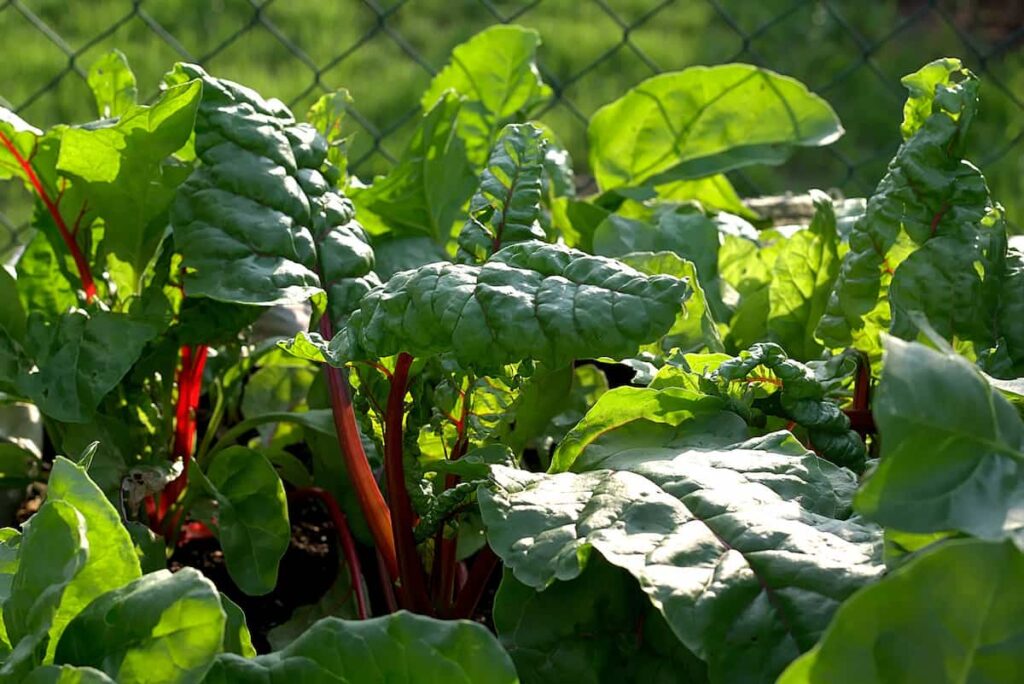
How to grow Chard in the USA
Soil requirement for growing Chard in the USA
- The soil requirement for growing Chard in the USA is relatively simple. Chard prefers well-drained soil with a pH of 6.0 to 7.5.
- Chard can be grown in different types of soils, from sandy loams to heavy clayey soils, as long as the soils are well-drained and have a pH in the optimal range. Chard does not tolerate waterlogged or poorly drained soils.
- You can improve soil structure if the soil is too sandy by adding organic matter like manure or compost. If your soil is too clayey, you can improve its drainage by adding sand or grit.
- It is best to grow Chard in raised beds or garden rows that have been amended with organic matter to create ideal growing conditions.
Chard growing areas in the USA
- The best Chard-growing areas in the USA are along the coast, in the milder climate regions. Chard grows best with some organic matter in the soil, so consider amending your soil with compost or other organic matter before planting.
- Chard is grown commercially in California, Arizona, Florida, Louisiana, Texas, and Hawaii. Chard is a cool-season crop, and it grows best in full sun.
- In the Northeast, Chard can be planted as early as April. The key to successful plant growth is to use a well-drained soil mix and to keep the plants evenly moist. Chard can also be grown in containers.
- In the Midwest, Chard can be planted from mid-April through May. The best results will come from using a high-quality soil mix and keeping the plants watered regularly. Chard grown in containers may need to be watered more often.
- In the South, Chard can be planted from late March through April. The plants will need full sun and well-drained soil. Chard grown in containers may need to be watered more often.
- In the West, Chard can be planted from early April through May. The best results will come from using a high-quality soil mix and keeping the plants evenly moist. Swiss Chard varieties in the USA
In case you missed it: How to Grow Spinach in USA: Soil, Propagation, Planting, Care, and Farming Tips
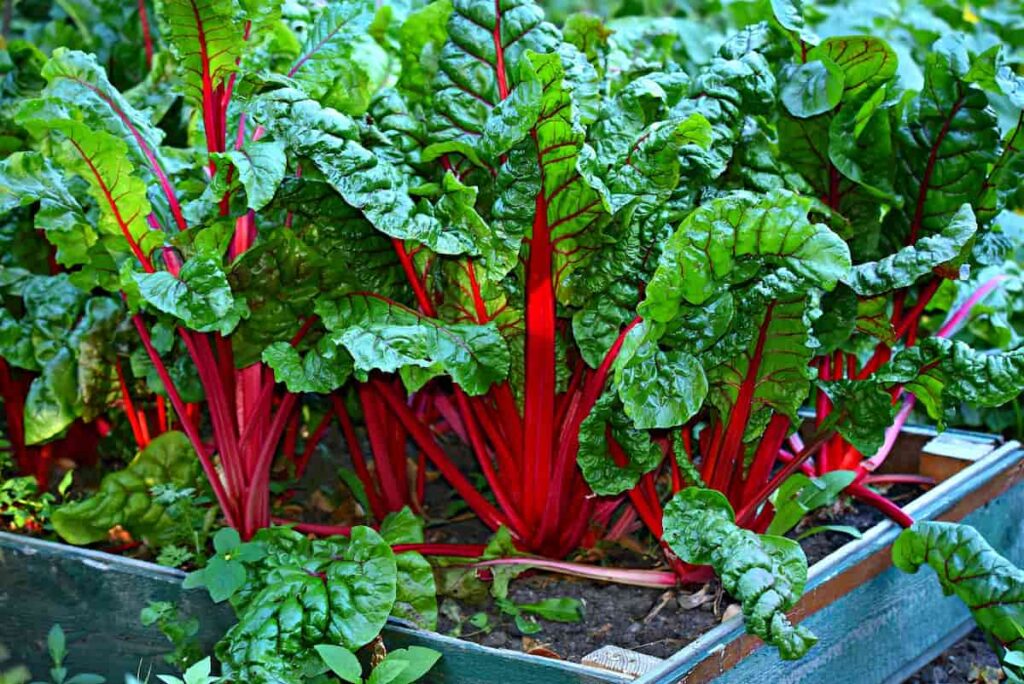
Swiss Chard varieties in the USA
Different types of Swiss Chard are available in the USA, each with its unique flavor and appearance. Some of the most popular varieties include:
- Rainbow Chard: This variety is characterized by its brightly colored leaves, which can range from yellow to purple. Rainbow Chard is one of the sweeter-tasting Chards, making it a good choice for cooked dishes or salads.
- Ruby Chard: This variety has deep red stems and dark green leaves. It has a slightly bitter taste that some people find more palatable than other Chards. Ruby Chard is often used in Italian cooking.
- White leaf Chard: As its name suggests, this variety has pale white leaves. It has a milder flavor than other Chards, making it a good choice for those who do not like strong-tasting greens.
Some of the most popular varieties include ‘Bright Lights,’ ‘Fordhook Giant,’ and ‘Ruby Red.’
How to grow Chard in containers?
- A container that is 12 inches deep and has drainage holes
- Potting mix or well-drained garden soil
- Fertilizer
- Chard seedlings or seeds
Instructions
- Fill your container with potting mix or garden soil and fertilize it.
- Plant your Chard seedlings or seeds in the soil.
- Water regularly and care for your Chard plants as they grow. Harvest Chard leaves when they are big enough to eat.
How to propagate Swiss Chard in the USA?
Swiss Chard is a leafy green vegetable plant related to beets and spinach. Swiss Chard can be propagated from seed or by division.
- To propagate from seed, sow the seeds in moistened potting mix or vermiculite. Cover the pot or container with plastic wrap to retain moisture and place it in a warm location. Keep the soil moist but not wet; the seeds will germinate within two weeks. Once the seedlings have two true leaves, they can be transplanted into individual pots or the garden.
- To propagate by division, dig up an existing plant and divide the root ball into many sections using a sharp knife. Replant each section immediately in moistened soil or vermiculite at the same depth as it was growing. Water well and keep the soil moist until new growth appears.
In case you missed it: How to Grow Eggplant in USA: Soil, Propagation, Planting, Care, and Farming Tips
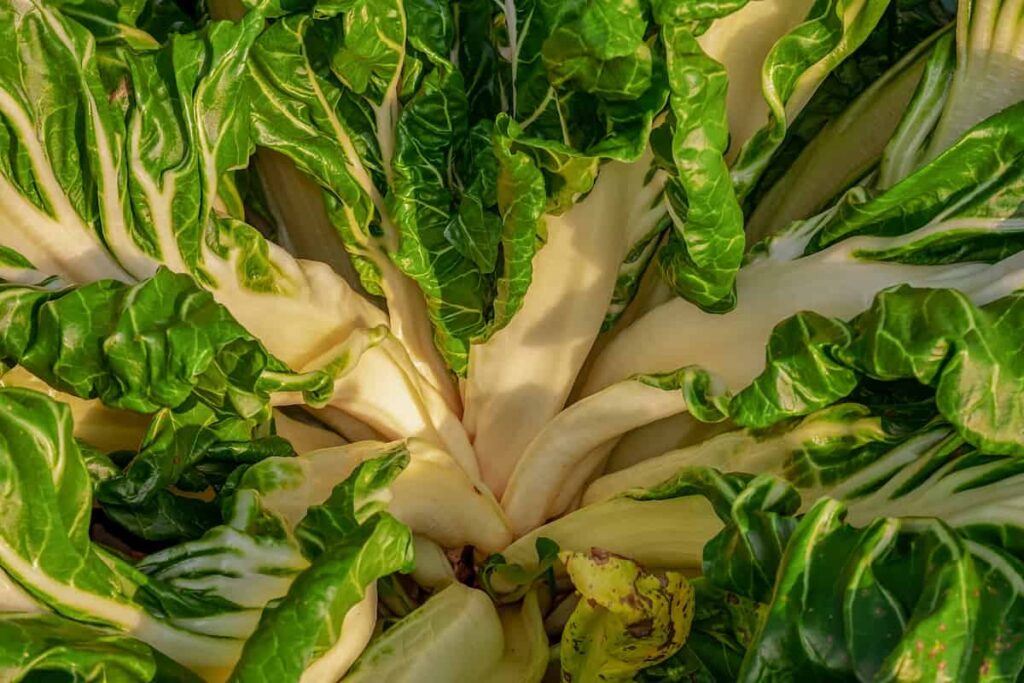
Growing Swiss Chard from seed in the USA
- The first step is to select the correct location. Swiss Chard prefers full sun and does well in partial shade. The soil should be well-drained and rich in organic matter.
- Once you have chosen the perfect spot, it’s time to prepare the soil. Loosen the top few inches of soil and mix in some compost or other organic matter. This will help your Chard plants to thrive.
- Now it’s time to sow your seeds. Sow them directly into the ground or seedling trays filled with potting mix. If sowing into trays, transplant the seedlings when they are big enough to handle (about 4-6 weeks).
- Water your Chard plants regularly, especially during periods of hot weather. Add a layer of mulch around the Chard plants to help retain moisture.
- Harvest your Chard leaves when they reach 8-10 inches in length. Cut them off at the base, being careful not to damage the plant itself. Swiss Chard leaves can be used fresh or cooked – enjoy.
Swiss Chard fertilizer requirements
Swiss Chard is a relatively low-maintenance crop, but fertilization is essential for optimal growth and yield. Swiss Chard requires high levels of nitrogen, phosphorus, and potassium. A complete fertilizer with a ratio of 10-10-10 or 12-12-12 is ideal. Apply fertilizer to the soil before planting and again when plants are 4-6 weeks old. Side dress with compost or manure every few weeks throughout the growing season.
Swiss Chard planting care in the USA
When it comes to Swiss Chard planting care, there are some essential tips to keep in mind. First, the soil should be loose and well-drained. Second, Chard can be propagated by seed, so if you’re starting from scratch, that’s the route you’ll want to take once the Chard seeds have germinated and thin them out so that only the strongest Chard plants remain. When it comes time to transplant the seedlings, do so with care – handle them gently so as not to damage the roots.
As for ongoing care, Swiss Chard is a relatively low-maintenance plant. Water it regularly (but don’t overdo it), and fertilize every few weeks during the plant growing season. If you live in a region with hot summers, provide some afternoon shade to prevent the leaves from wilting. Otherwise, sit back and enjoy the bounty of fresh greens.
Growing Chard in a raised bed
- Growing Chard in a raised bed is a great way to start gardening. Chard is a hardy vegetable that can tolerate neglect, making it ideal for beginner gardeners. Raised beds offer several benefits for growing Chard, including good drainage, improved soil quality, and warmer temperatures in the spring.
- When choosing a spot for your raised bed, ensure it gets 5 to 6 hours of sun per day. Chard likes well-drained soil that is rich in organic matter. You can improve your soil by adding compost or manure before planting.
- To plant Chard, sow seeds directly in the soil in early spring or start seedlings indoors and transplant them later. Space plants are 12 inches apart, so they have room to grow. Water regularly and fertilize every few weeks with an all-purpose fertilizer to keep plants healthy and productive.
- Chard is ready to harvest when the plant leaves are 4 to 6 inches long. Cut leaves outside the plant, leaving the inner leaves to grow. Chard will keep producing new leaves all season long if you keep harvesting them regularly.
In case you missed it: How to Grow Rosemary in USA: Soil, Propagation, Planting, Care, and Farming Tips
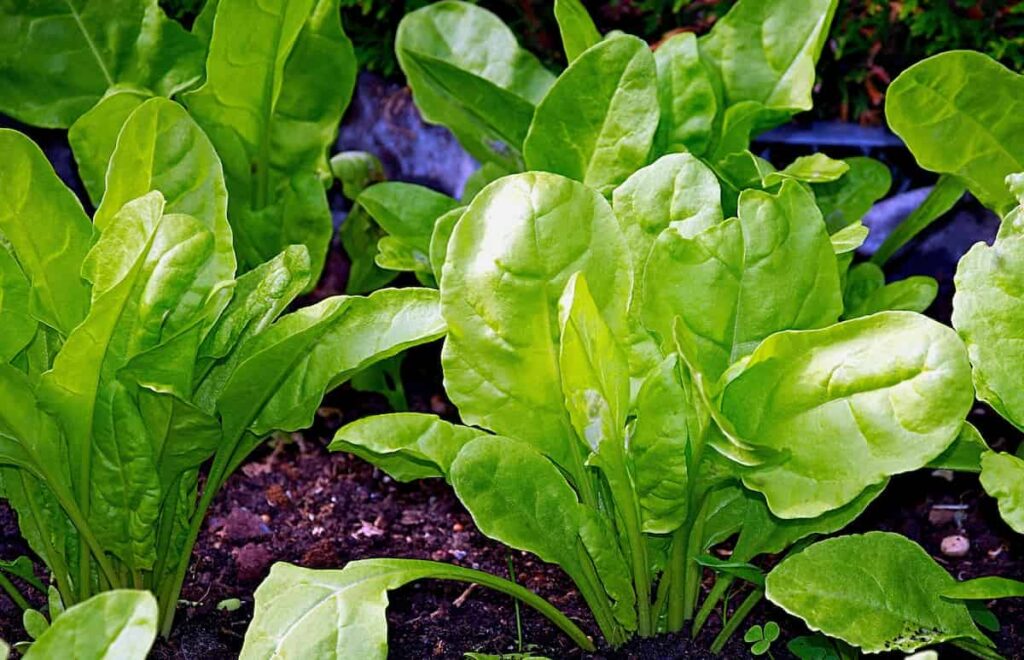
Swiss Chard growing problems in the US
- Swiss Chard is a popular leafy green vegetable, prized for its nutritional value and versatile flavor. However, Swiss Chard can be difficult to grow in the United States due to its sensitivity to temperature and soil conditions.
- One of the most common problems with growing Swiss Chard in the United States is that the plants bolt quickly in warm weather. Bolting is when a plant flowers and sets seed prematurely before the leaves are fully developed. This can happen if the plants are exposed to temperatures over 80 degrees Fahrenheit for extended periods. Once a plant bolts, it stops producing edible leaves and becomes bitter-tasting. To prevent bolting, choose a variety of Swiss Chard known to be heat-resistant, and make sure to plant it in an area that will stay cool during hot weather (such as in partial shade).
- Another problem that can occur when growing Swiss Chard in the United States is poor germination rates. Many of the planted seeds will not sprout or produce viable plants. There are several reasons why this might happen, including incorrect planting depth, too much or too little water, or excessively cold or hot temperatures during germination.
Water requirement for Swiss Chard plant growth
For Swiss Chard to grow properly, it needs water access. The amount of water required by the plant will depend on the climate and weather conditions. Swiss Chard plants generally need about 1 inch (2.5 cm) of water per week. More water may be needed during periods of drought or high temperatures.
It is essential to ensure that the soil around the plant is not allowed to dry out completely, as this can cause the Chard plant to wilt and die. If you are growing Swiss Chard in containers, check the soil moisture levels regularly and water as needed.
Swiss Chard pests, diseases, and their control
Swiss Chard is a versatile and nutritious leafy green and easy crop to grow in the USA. However, like all plants, it can be affected by pests and diseases. Here are some common Swiss Chard pests, diseases, and their control:
Pests
Swiss Chard can be affected by several pests and diseases. In the United States, common pests include leaf miners, caterpillars, aphids, and whiteflies. These plant pests can be controlled with insecticidal soap or other pesticides. Common diseases of Swiss Chard include downy mildew, powdery mildew, rust, and leaf spot. These diseases can be controlled with fungicides.
In case you missed it: How to Grow Okra in USA: Soil, Propagation, Planting, Care, and Farming Tips
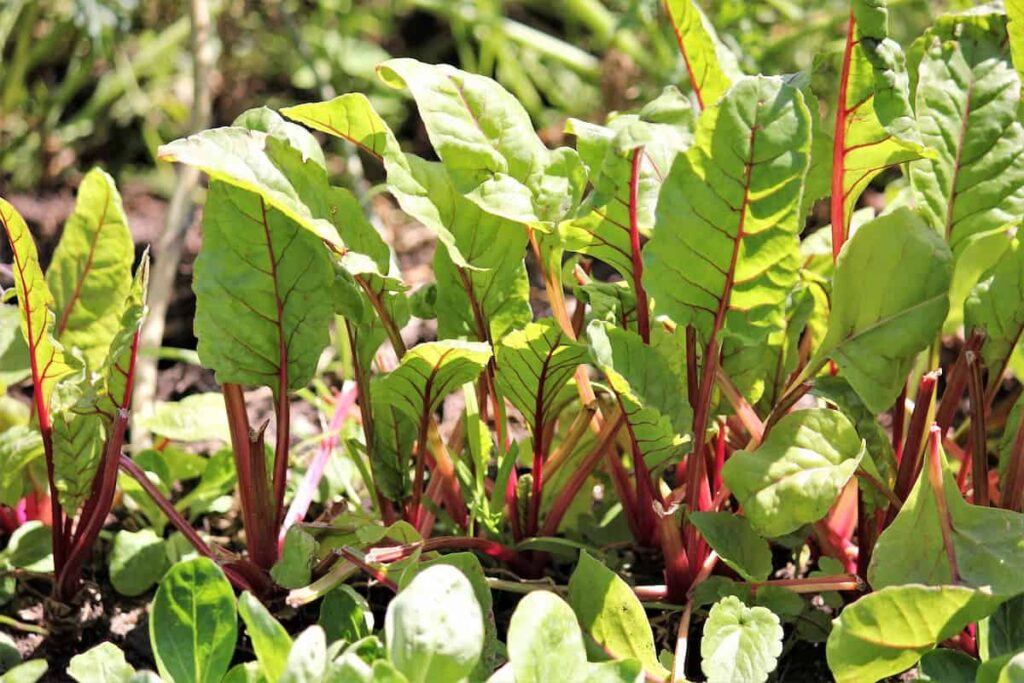
Aphids
These small, sap-sucking insects can cause stunted growth and leaf deformities. They are also capable of transmitting plant viruses. To control aphids, try using an insecticidal soap or neem oil.
Caterpillars
The cabbage looper and diamondback moth caterpillar can cause severe damage to Swiss Chard plants. Hand-pick caterpillars off of plants and destroy them. You can also use Bacillus thuringiensis (BT) to control caterpillars.
Flea beetles
These small black beetles jump when disturbed and feed on the leaves of Swiss Chard, causing small holes. Cover plants with floating row cover to prevent flea beetle damage in Chard plants. If flea beetles are already present, use an insecticide containing pyrethrin or Spinosad.
Diseases – Downy mildew
This fungal disease causes yellow color spots on leaf surfaces and white/gray mold on the undersides of leaves. It thrives in cool, wet weather. Destroy infected leaves and avoid overhead watering to prevent downy mildew from spreading.
Why is Swiss Chard not growing?
If your Swiss Chard is not growing, there are a few essential things you can do to troubleshoot. First, ensure you are planting in well-drained soil high in organic matter. Swiss Chard likes a lot of nitrogen, so if your soil is lacking, consider adding some compost or manure. You must also ensure you water regularly and evenly, as Swiss Chard will not tolerate drought. If you have been doing all these things and your Swiss Chard isn’t growing, it may be time to start from seed again.
When and how to harvest Swiss Chard?
- Swiss Chard can be harvested as soon as the plant leaves are big enough to eat. Cut the leaves off at the plant base with a sharp knife to harvest. Swiss Chard leaves can be eaten fresh or cooked. The stalks can also be cooked and eaten but are often tough and stringy. If you plan to cook the stalks, it is best to peel them first.
- Harvest Swiss Chard when the leaves are 6-8 inches long. Cut leaves with a sharp knife, leaving an inch or two of the plant stem. Swiss Chard can be harvested continuously throughout the growing season.
- To extend the harvest, cut the leaves from the plant bottom first. This will encourage new growth from the top of the plant. Plants can be cut back several times during the growing season.
- Swiss Chard yield in the United States varies by region and climate. In general, Swiss Chard grows best in cool weather season. The plants will bolt (go to seed) if exposed to too much heat. Swiss Chard planted in early spring or fall usually produces the best yields.
Frequently asked questions about growing Swiss Chard
Does Swiss Chard regrow after cutting?
The plant will regrow before you know it, and you’ll have another crop in about 7-10 days. You can continue harvesting all summer.
In case you missed it: How to Grow Asparagus in USA: Soil, Propagation, Planting, Care, and Farming Tips
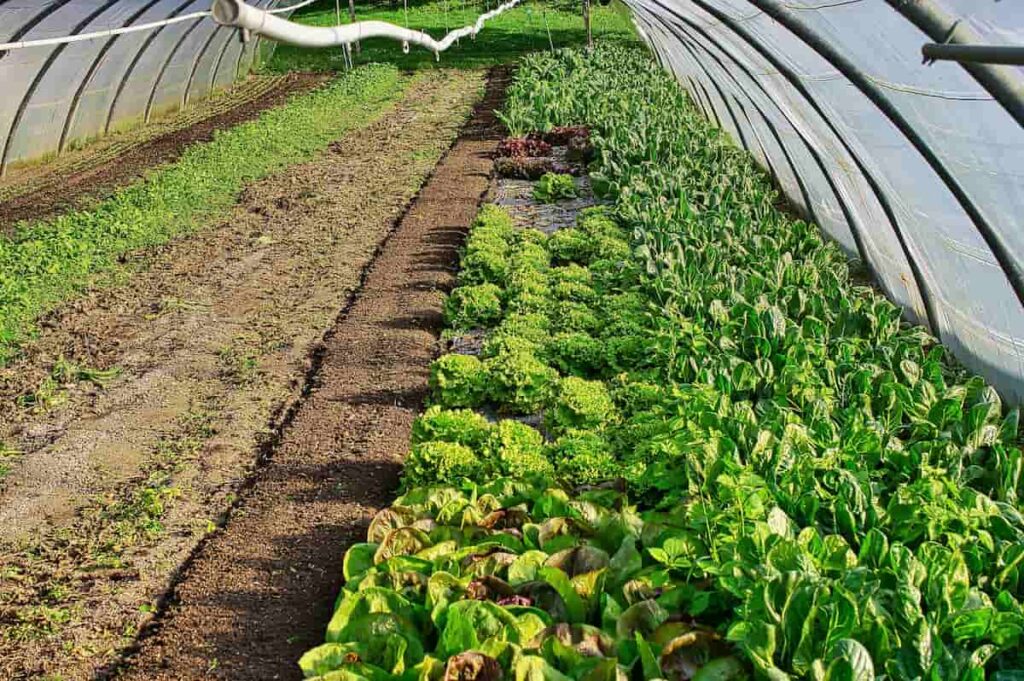
Does Swiss Chard need full sun?
It performs best in full sun but tolerates a little shade. The soil must be well drained and amended with organic matter like compost.
Is Swiss Chard hard to grow?
Chard is generally easy to grow. It just needs enough room, water, and perhaps a bit of fertilizer.
Does Swiss Chard grow well in the shade?
Swiss Chard: Swiss Chard grown for its crunchy stems needs more light, but if you’re growing this beautiful plant mainly for the tasty leaves, it will do well in the shade.
How long does it take for Swiss Chard to mature?
The fully-formed leaves will be ready to harvest about 10-12 weeks after sowing, but late summer sowings may take a little longer. Cut individual leaves as needed, and the plant will keep producing new growth.
Why is my Swiss Chard not growing?
Make sure your plants are not crowding one another. They should be about eight inches apart. Another possibility is that the soil is too acidic.
Conclusion
Chard is a popular crop in the United States due to its versatility and easy-to-grow nature. Chard is a leafy green vegetable. It is an annual plant that grows best in cool weather and can be found in many colors, including red, yellow, and white. Chard is a popular choice for home gardens and commercial farms due to its hardiness and versatility.
- Types of Pesticides Used in Agriculture: A Beginner’s Guide
- Economical Aquaculture: A Guide to Low-Budget Fish Farming
- 15 Common Planting Errors That Can Doom Your Fruit Trees
- How to Make Houseplants Bushy: Effective Tips and Ideas
- Innovative Strategies for Boosting Coconut Pollination and Yield
- Pollination Strategies for Maximum Pumpkin Yield
- The Complete Guide to Chicken Fattening: Strategies for Maximum Growth
- Natural Solutions for Tulip Problems: 100% Effective Remedies for Leaf and Bulb-Related Issues
- Revolutionizing Citrus Preservation: Towards a Healthier, Greener Future
- Natural Solutions for Peony Leaf and Flower Problems: 100% Effective Remedies
- Maximizing Profits with Avocado Contract Farming in India: A Comprehensive Guide
- Natural Solutions for Hydrangea Problems: 100% Effective Remedies for Leaf and Flowers
- The Ultimate Guide to Choosing the Perfect Foliage Friend: Bringing Life Indoors
- From Sunlight to Sustainability: 15 Ways to Use Solar Technology in Agriculture
- The Ultimate Guide to Dong Tao Chicken: Exploring from History to Raising
- The Eco-Friendly Makeover: How to Convert Your Unused Swimming Pool into a Fish Pond
- Mastering the Art of Delaware Chicken Farming: Essentials for Healthy Backyard Flocks
- 20 Best Homemade Fertilizers for Money Plant: DIY Recipes and Application Methods
- How to Craft a Comprehensive Free-Range Chicken Farming Business Plan
- Brighten Your Flock: Raising Easter Egger Chickens for Beauty and Bounty
- How to Optimize Your Poultry Egg Farm Business Plan with These Strategies
- Subsidy for Spirulina Cultivation: How Indian Government Schemes Encouraging Spirulina Farmers
- Ultimate Guide to Raising Dominique Chickens: Breeding, Feeding, Egg-Production, and Care
- Mastering the Art of Raising Jersey Giant Chickens: Care, Feeding, and More
- Ultimate Guide to Raising Legbar Chickens: Breeding, Farming Practices, Diet, Egg-Production
- How to Raise Welsummer Chickens: A Comprehensive Guide for Beginners
- How to Protect Indoor Plants in Winter: A Comprehensive Guide
- Ultimate Guide to Grow Bag Gardening: Tips, Tricks, and Planting Ideas for Urban Gardeners
- Guide to Lotus Cultivation: How to Propagate, Plant, Grow, Care, Cost, and Profit
- Agriculture Drone Subsidy Scheme: Government Kisan Subsidy, License, and How to Apply Online
- Ultimate Guide to Raising Araucana Chickens: Breed Profile, Farming Economics, Diet, and Care
- Bringing Hydroponics to Classroom: Importance, Benefits of Learning for School Students
- Ultimate Guide to Raising Polish Chickens: Breed Profile, Farming Economics, Diet, and Care
- Ultimate Guide to Raising Australorp Chickens: Profile, Farming Economics, Egg Production, Diet, and Care
- Silkie Chicken Farming: Raising Practices, Varieties, Egg Production, Diet, and Care
- Sussex Chicken Farming: Raising Practices, Varieties, Egg Production, Diet and Care